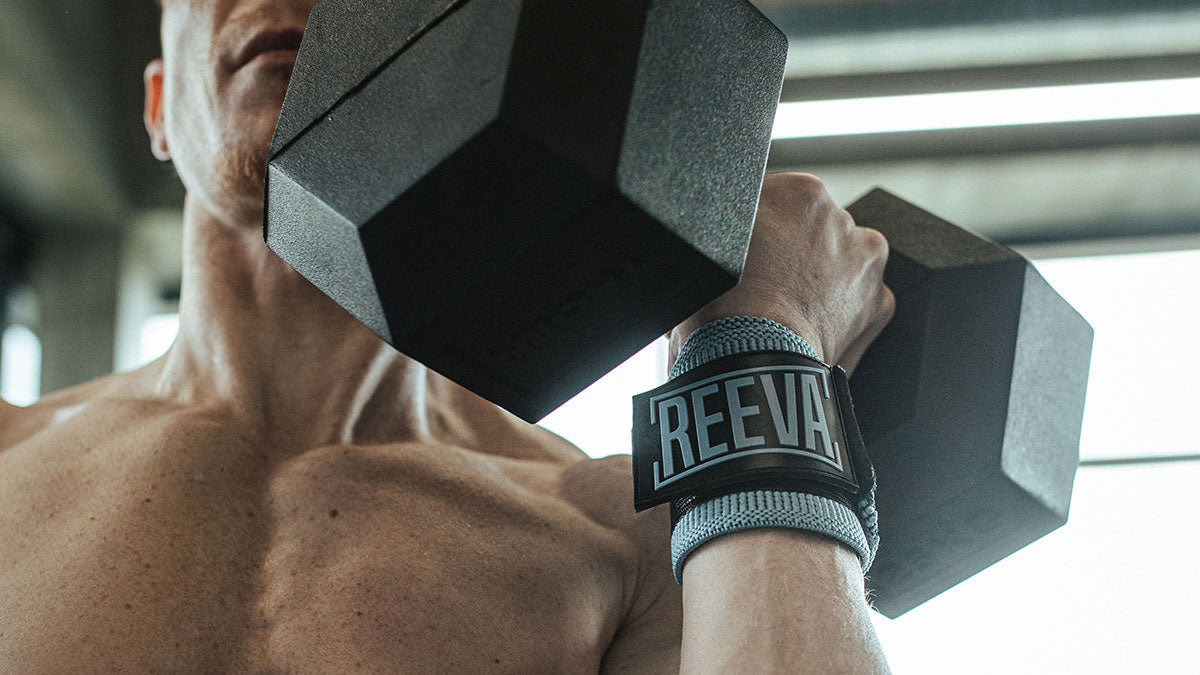5 tips for using Wrist Wraps

Functional fitness gear is a booming market and there’s never been a shortage of accessories. Some of the most popular are wrist wraps, straps, belts and knee sleeves. In my opinion, the wrist wrap is one of the most overused pieces of support gear.
The purpose of a wrist wrap is to provide support to the wrist during heavy or max effort lifts in pressing movements and overhead lifts. These movements could result in the wrist being pulled into excessive extension under load, which is known as a compressive force on the joint. Having a wrist wrap may be worth it for an athlete, but I often notice people don’t use them correctly. Here are a few tips to help you get the most out of your training
1. Warm-Up Without Your Wrist Wraps
You don’t need to wrap your wrists for most of your 1RM bench work; I usually tell my athletes to wear the wraps only on training days where we are near or at their max load. The dependence on wrist wraps tends to limit strength gain. It’s not a secret that some of the most accomplished athletes at our gym rarely wear wrist wraps. This is because they’ve truly mastered the sport.

2. Don’t Tie Your Wrist Wraps Too Low
One of the most important things about any wrist wrap is that it should extend around your wrist joint to provide support. If the wrap does not reach your wrist joint, then it has turned from a support system into a forearm bracelet. Make sure you tie your wrap so that it covers the wrist joint enough to create support and prevent excessive wrist extension.
3. Use The Right Kind of Wrap
There are two primary kinds of wraps for wrists: the thinner, more flexible cotton wraps and Velcro-bound powerlifting-style wraps that provide more wrist support. If you are looking for the maximum results for a particular movement, such as the bench press or shoulder press, I would recommend using the thicker wraps. For maximum performance in your clean and jerk or snatch, thinner wraps might be a better choice as they allow for higher mobility. Wrist must be extended in order to receive clean and jerk correctly. Make sure you keep your wrist slightly extended as well.
4. You don’t need to put on wraps for most gymnastic movements.
If you’re not planning on taking part in any gymnastics events like the vault or pommel horse, you probably don’t need to use wrist wraps for bodyweight exercises like ring dips, handstand push-ups or pull-ups. An exception might be necessary though if there is already existing pain from an injury. Some athletes choose to wear wrist supports for performing thumb rolls with a false grip because it can protect the skin. But wrist support isn't needed for most of the gymnastics movements we do.

5. Don't Wear Wrist Wraps To Hide Mobility And Flexibility Issues
Wrist wraps can help discomfort because of the positioning of your wrist. Wearing them, such as during the clean's receiving position or when performing front squats, can provide support and relieve pressure on joints. Most athletes who feel discomfort in their wrist when clean or front squat probably have a poor rack position. They probably suffer from poor mobility, which leads to forward bending of the upper body. Poor thoracic extension, a lack of shoulder flexion and external rotation, and wrist flexibility can all play a role in a poor rack position. Wrist wraps don't actually make you more flexible.
- Tags: tips Wrist wraps











